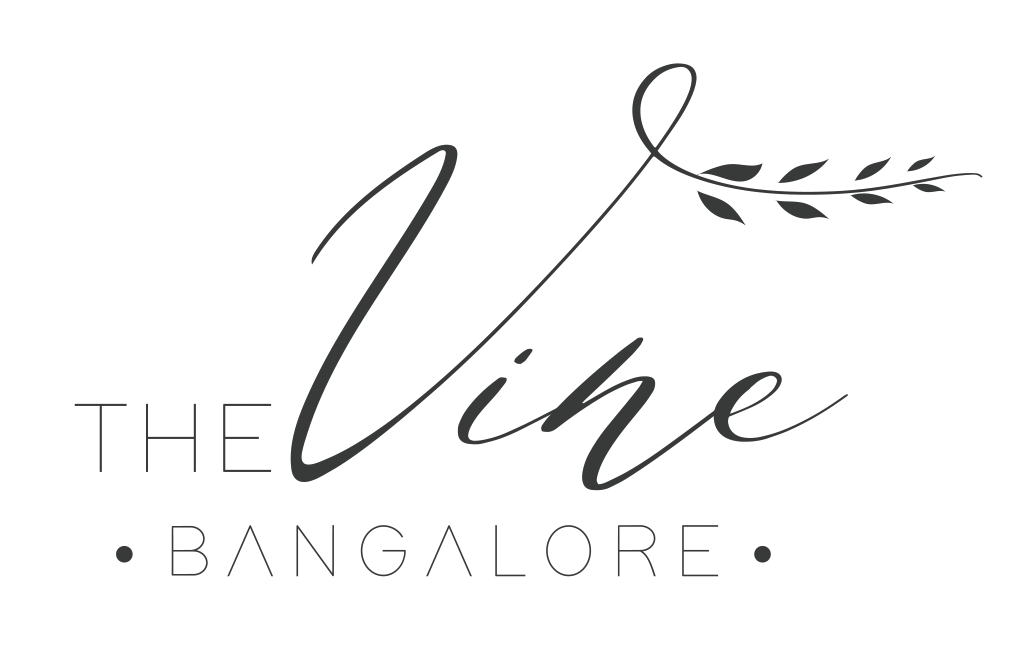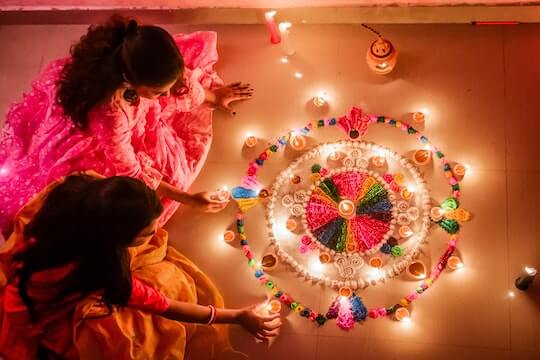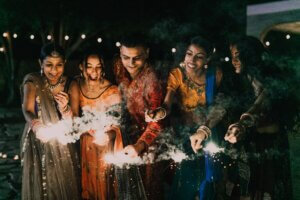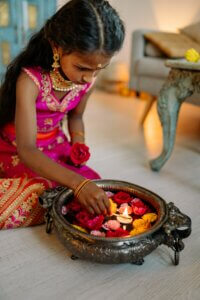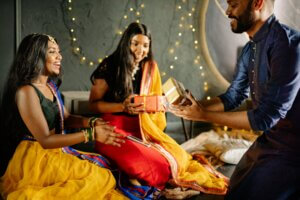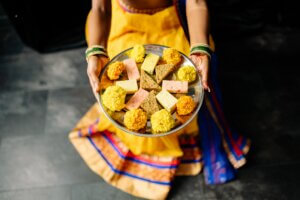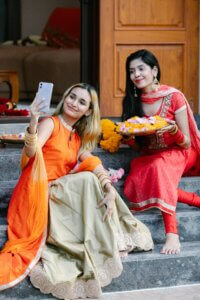If you’re new to the roller coaster that is India with its spices and colours and its festivals, and all of the beautiful chaos, then now is the perfect time to explore and join in the festivities! They are an experience not to be forgotten.
To start off, here’s a 101 guide to Diwali. Popularly called as the Festival of Lights, Diwali is one of the largest festivals in India, and is celebrated in some way or form practically across the country.
HISTORY + MYTHOLOGY LESSON
Diwali celebrates the end of exile and homecoming of Ram, his consort Sita, and younger brother Laxman.
Weeks before Diwali families buy new clothes, spruce up their homes and spring clean; it is also a time of giving and appreciating the work of staff and community helpers.
WHAT TO WEAR
If you’re lucky and are invited to a Diwali Pooja or Aarti, be aware that customs differ from community to community and across regions. Ask your host for pointers in advance, some gatherings will cover their heads during the Pooja, so do carry a scarf. Western attire is acceptable, but kind of along the lines of the dress code for churches in Italy, covered knees and shoulders are appreciated. You may also enjoy the process of buying an Indian traditional outfit, but be mindful that they may turn out to be uncomfortable with ties and bits and bobs. A good place to get you started is our list of great Modern Indian Clothing brands!
GIFTING
Next, remember to take a gift! It’s safest to stick to vegetarian and gelatine-free ingredients, if you plan to take something edible. Check out our 2022 Vine list of Diwali gifting ideas here!
VINE PRO TIP: While Soan Papdi is a very commonly gifted sweet, you can instead gift handmade chocolates, savoury cookies, candles or some colourful home décor items too.
LOSE THE SHOES
During the Pooja or Aarti, you may be required to go barefoot. A definite sign is a mound of shoes by the door, please remove your footwear! The congregation will sometimes sing and clap along with the proceedings, feel free to join in and enjoy the vibe. Do try not to stand with your back to the deity or Mandir. After the Pooja, Prasad (usually sweet but can be savoury) is handed to the congregation from the Pooja thali, and is usually accepted using cupped hands, left hand placed below the right one.
TIME TO EAT
Most gatherings will be followed by a meal, enjoy the fare on offer! It’s safe to help yourself once the meal is served, the hosts may involve themselves in the serving of the meal and may even eat after most guests leave. Some Diwali soirees may be intimate sit down dinners or large “great Indian wedding” style events even, not a Pooja. Expect elaborately laid tables in bedecked homes, sometimes with a side of card games for entertainment.
GOOD TO KNOW
A few other things to bear in mind, as anywhere else:
– Ask prior to photographing
– Be mindful that the whole spectacle and colour of it is actually a spiritual ceremony for most attending,
– Be respectful of your hosts’ sentiment and most any faux pas will be forgiven.
Have a fun, brightly lit and joyously exuberant Indian Diwali!
Main photo by Rahul Pandit
